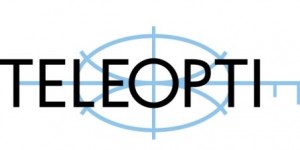What came first the chicken or the egg? Happy customers or happy employees?
 Tommy Palomäki at Teleopti considers the connection between happy customers and happy employees in the contact centre and suggests five ways to use workforce management to achieve both.
Tommy Palomäki at Teleopti considers the connection between happy customers and happy employees in the contact centre and suggests five ways to use workforce management to achieve both.
It’s a conundrum that’s baffled people for years but does it really matter? The same could apply in contact centres.
Why debate whether happy customers or happy staff come first when the two are inextricably linked? It is commonly accepted that motivated, engaged agents result in positive customer outcomes with many studies indicating a strong correlation between customer and employee satisfaction.
So how can workforce management (WFM) help to achieve both?
Five ways to use WFM for happy employees and happy customers
Take a look at your contact centre. Are your agents happy? If not, why not? What motivates them to go the extra mile and what do you need to do to attract and keep the best people? Gone are the days when agents were not expected to think for themselves and sat with headsets on, answering routine enquiries all day long. Digitalisation, a mobile work ethic (if you’re not happy, you simply go elsewhere) and a growing customer-centric approach to doing business have turned this outmoded perception on its head. Today’s multi-skilled agents are highly prized assets, the frontline to customers with the power to make or break customer experiences, corporate reputations and profitability.
Agents like to feel they are valued, engaged and have the opportunity to make a real difference to the company they work for. Using the latest WFM including a life-style and self-service dimension is central to understanding and galvanizing this human factor to ensure happy and profitable customers. Use WFM to:
1. Make life easier – minimize the stress of stretched resources by using automated forecasting and intra-day scheduling to right-size your contact center throughout the day or run ‘what if’ scenarios to better prepare for busy seasonal periods or special marketing campaigns.
Then let automation take away the monotony of handling routine enquiries using Artificial Intelligence solutions or “bots”. This leaves well scheduled agents free to do the clever stuff like helping customers with highly emotive or sensitive issues or turning around upset or angry customers – all the things that spur them on to excel rather than just do a good enough job.
2. Empower agents – by giving them control over their working lives. Through self-service, allow them to select breaks and lunches, swap shifts, advise overtime availability and request time off with immediate feedback. If working from home is easier, let the latest web-based WFM technology give them the option to log in securely using their own devices including tablets and other mobile devices to check schedules, coaching and training sessions.
3. Retain the best – as the role of agents becomes more strategic, they can expect higher wages and better prospects. Companies need to work harder at attracting and then keeping the best talent. Use WFM to develop an effective skills matrix to keep up-to-date with agent skills and training and use the information to support tailored personal development plans, one-to-one sessions and meaningful career paths in a proactive way.
Introduce the latest gamification features to motivate employees, provide a forum for sharing top tips, encourage healthy competition and reward individual and team performance in a fun environment.
4. Build a team of ambassadors – like all technology, the more you use it, the more confident you become to the point where you fervently champion it. The same applies to WFM. Keep an eye out for these new champions in the contact center and make them ambassadors of WFM to boost agent involvement and the role of technology to help deliver outstanding customer service.
5. Close the loop – your agents might be your new customers but close the loop with end customers to provide a seamless, end-to-end experience. Listen to your agents, on the frontline, they know if your customers are happy, what works and what doesn’t. Devise a mechanism for agents to share best practice – building in time for workshops to hear what works in terms of scheduling and suggestions from the floor as to how it could be improved and remember to celebrate any successful changes adopted as a result.
The more you understand what makes your agents and customers tick, the more effective you’ll be at creating a well-balanced contact center inside and out. Then whether the chicken or the egg came first becomes irrelevant it’s a continuous virtuous circle of happy employees and customers.
Additional Information
 Teleopti, is a global provider of workforce management (WFM) software, offering a WFM solution that is sophisticated, localised and easy to use. As the largest “best-of-breed” vendor, Teleopti focuses on helping contact centres, back offices and retail stores improve customer service, employee satisfaction and profitability – through optimized, automated forecasting and scheduling.
Teleopti, is a global provider of workforce management (WFM) software, offering a WFM solution that is sophisticated, localised and easy to use. As the largest “best-of-breed” vendor, Teleopti focuses on helping contact centres, back offices and retail stores improve customer service, employee satisfaction and profitability – through optimized, automated forecasting and scheduling.
Teleopti provides everything necessary to effectively manage staff, forecast demand, create schedules automatically, develop accurate and insightful reports and improve overall customer satisfaction.
For additional information on Teleopti visit their Website or view their Company Profile




